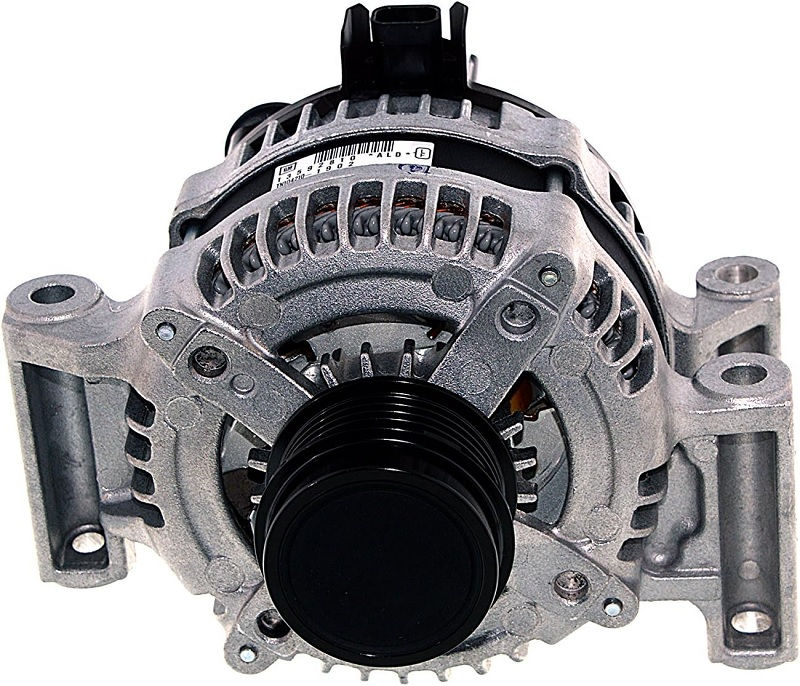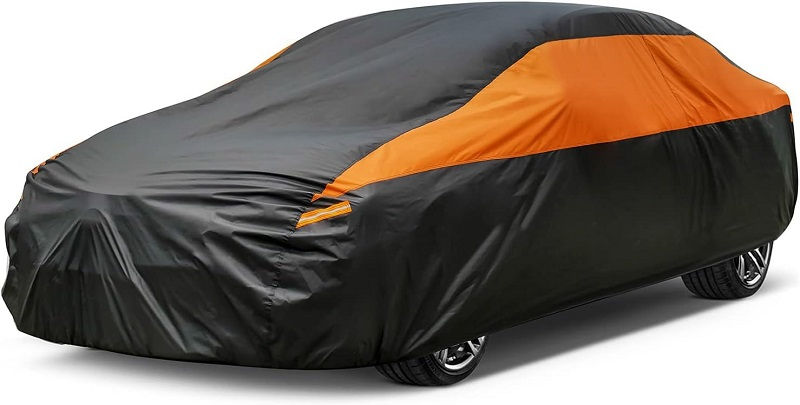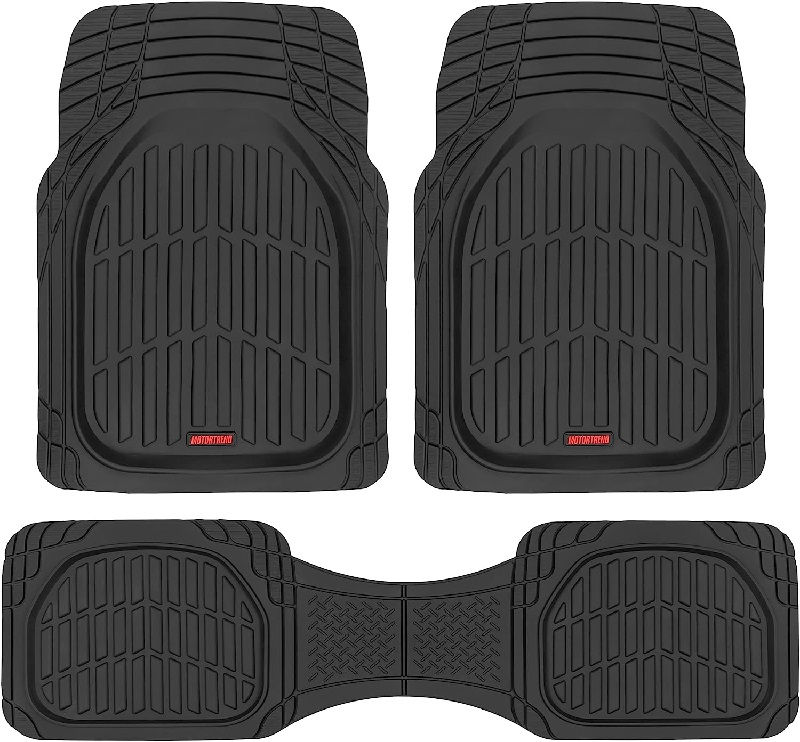This post contains affiliate links. This means I will make a commission at no extra cost to you should you click through and make a purchase [ “As an Amazon Associate, I earn from qualifying purchases.” ]. Read the full disclosure here.
Alternator For 2013 Chevy Malibu GuideMechanic.Com Are you experiencing issues with your 2013 Chevy Malibu’s alternator? In this comprehensive guide, we will delve into everything you need to know about this vital component of your vehicle.
From understanding how the alternator works to troubleshooting common problems, we’ve got you covered. So, let’s dive in and ensure you have a smooth and hassle-free driving experience with your Malibu!
Before we get into the nitty-gritty details, let’s first understand the role of the alternator in your 2013 Chevy Malibu. The alternator is responsible for generating electrical power and charging the battery while the engine is running.
See Also: Chevy Malibu Alternator
It also powers the electrical systems and accessories in your vehicle, such as the lights, radio, and air conditioning. Without a properly functioning alternator, you may experience issues like a dead battery, dimming lights, or even a stalled engine.
Common Alternator Problems
Check out this GM Genuine Parts 13592810 Alternator

While the alternator is a durable component, it can still experience certain issues over time. Here are some common problems that you might encounter with the alternator in your 2013 Chevy Malibu:
1. Worn-out Brushes:
The brushes in the alternator, which make direct contact with the rotor, can wear out over time. When the brushes become too worn, they may not maintain proper contact, leading to a loss of electrical power generation.
2. Faulty Voltage Regulator:
A malfunctioning voltage regulator can cause erratic charging or overcharging of the battery. This can result in a dead battery or damage to the electrical components in your vehicle.
3. Damaged Diode Rectifier:
If one or more diodes in the rectifier fail, it can cause electrical power to flow in the wrong direction, resulting in an inconsistent or insufficient charging of the battery.
4. Loose or Worn-out Belts:
The belts that drive the alternator can become loose or worn over time. Loose belts may slip, leading to reduced power generation, while worn-out belts may break, causing the alternator to stop working altogether.
5. Faulty Wiring or Connections:
Poor wiring or loose connections between the alternator and the battery can disrupt the flow of electrical power. This can result in intermittent charging or a complete loss of power.
Summary:
Common alternator problems include worn-out brushes, faulty voltage regulators, damaged diode rectifiers, loose or worn-out belts, and faulty wiring or connections. Identifying these issues can help you diagnose and address any problems with your alternator.
Alternator Replacement Process
If you’ve determined that your alternator needs to be replaced, fear not! Here’s a step-by-step guide to help you through the process:
1. Prepare:
Gather the necessary tools and equipment, including a wrench set, a socket set, a multimeter, and a replacement alternator that matches your 2013 Chevy Malibu’s specifications.
2. Disconnect the Battery:
Before working on the alternator, disconnect the negative terminal of the battery to prevent any electrical mishaps.
3. Remove the Serpentine Belt:
Using a wrench or a socket, loosen the tension on the serpentine belt to remove it from the alternator pulley. Take note of the belt’s routing to ensure proper reinstallation.
4. Disconnect Electrical Connections:
Remove any electrical connections attached to the alternator, including the main power cable and any smaller wires or connectors. Take care to label or photograph the connections for easy reassembly.
5. Remove Mounting Bolts:
Using a socket or wrench, remove the mounting bolts that secure the alternator to its bracket. Support the alternator with one hand while removing the final bolt to prevent it from falling.
6. Install the New Alternator:
Position the replacement alternator in the bracket and secure it in place with the mounting bolts. Reconnect all electrical connections, ensuring they are properly seated and tightened.
7. Reinstall the Serpentine Belt:
Route the serpentine belt back onto the alternator pulley according to the diagram or notes you made earlier. Use a wrench or socket to apply tension to the belt, ensuring it is properly aligned.
8. Reconnect the Battery:
Reconnect the negative terminal of the battery, making sure it is securely fastened. This will restore power to the vehicle’s electrical system.
9. Test the New Alternator:
Start the engine and use a multimeter to test the voltage output of the new alternator. Ensure that it is within the manufacturer’s specifications.
Summary:
To replace the alternator in your 2013 Chevy Malibu, gather the necessary tools, disconnect the battery, remove the serpentine belt, disconnect electrical connections, remove the mounting bolts, install the new alternator, reinstall the serpentine belt, reconnect the battery, andtest the new alternator.
See Also: 2011 Chevy Cruze Headlight Bulb
Following these steps will ensure a successful alternator replacement and restore proper power generation to your vehicle.
DIY Alternator Maintenance Tips
Check out this GUNHYI Car Cover for Automobiles

Proper maintenance can extend the lifespan of your alternator and prevent costly repairs. Here are some DIY maintenance tips to keep your alternator in optimal condition:
1. Keep Electrical Connections Clean:
Periodically inspect and clean the electrical connections between the alternator and the battery. Corrosion or dirt can hinder the flow of electricity, impacting alternator performance. Use a wire brush or electrical contact cleaner to remove any buildup.
2. Regularly Inspect Belts:
Inspect the condition and tension of the belts that drive the alternator. Over time, belts can become loose or worn, affecting the alternator’s performance. Adjust or replace belts as needed to ensure proper power transfer.
3. Check Battery Health:
A weak or failing battery can put additional strain on the alternator. Regularly test the battery’s voltage and perform a load test to assess its health. Replace the battery if necessary to prevent excessive strain on the alternator.
4. Avoid Overloading the Electrical System:
Excessive use of electrical accessories, such as high-powered audio systems or aftermarket lighting, can put a strain on the alternator.
Avoid overloading the electrical system to ensure the alternator can meet the demands of your vehicle’s electrical components.
5. Maintain Proper Belt Tension:
Ensure the serpentine belt that drives the alternator is properly tensioned. A loose belt can slip, reducing power generation. Refer to your vehicle’s manual for the correct belt tension specifications and adjust accordingly.
6. Protect from Moisture and Contaminants:
Avoid exposing the alternator to excessive moisture or contaminants. Moisture can corrode electrical connections, while contaminants can interfere with the alternator’s internal components. Keep the alternator clean and dry to maintain its performance.
7. Schedule Regular Inspections:
Include alternator inspections in your regular vehicle maintenance schedule. Have a professional mechanic check the alternator’s performance, voltage output, and overall condition. Early detection of any issues can prevent major alternator failures.
Summary:
To maintain your alternator, keep electrical connections clean, inspect and adjust belts regularly, check battery health, avoid overloading the electrical system, maintain proper belt tension, protect from moisture and contaminants, and schedule regular inspections.
See Also: 2014 Chevy Cruze Headlight Bulb
These maintenance practices will help extend the lifespan of your alternator and ensure its optimal performance.
Cost of Alternator Replacement
Check out this Motor Trend FlexTough Floor Mats for Cars

When facing alternator issues, it’s important to consider the cost of replacement. The cost can vary depending on several factors, including the brand, quality, and where you choose to have the replacement performed:
1. OEM vs. Aftermarket:
OEM (Original Equipment Manufacturer) alternators are typically more expensive but offer a higher level of quality and compatibility.
Aftermarket alternators, while usually more affordable, may vary in quality and performance. Consider your budget and the specific needs of your vehicle when deciding between OEM and aftermarket options.
2. Labor Costs:
The cost of labor for alternator replacement can vary depending on the location and the mechanic or service center you choose. It’s advisable to obtain quotes from multiple sources and consider the reputation and expertise of the service provider.
3. Warranty Coverage:
Consider the warranty coverage offered with the replacement alternator. OEM alternators often come with longer warranties, providing peace of mind in case of any future issues. Aftermarket alternators may have shorter warranties or limited coverage.
4. DIY vs. Professional Installation:
Replacing the alternator yourself can save on labor costs. However, it requires mechanical knowledge and the right tools. If you’re not confident in your abilities, it’s best to hire a professional to ensure the alternator replacement is performed correctly.
5. Additional Costs:
Keep in mind that there may be additional costs associated with alternator replacement, such as the cost of a new serpentine belt, belt tensioner, or other related components. Inspect these parts during the replacement process and replace them if necessary.
Summary:
The cost of alternator replacement can vary based on factors such as OEM vs. aftermarket options, labor costs, warranty coverage, DIY vs. professional installation, and any additional components required.
Consider these factors when determining the overall cost of alternator replacement for your 2013 Chevy Malibu.
Finding the Right Alternator
When it comes to purchasing a replacement alternator for your 2013 Chevy Malibu, finding the right one is crucial. Here are some steps to help you in the process:
1. Determine Your Vehicle’s Specifications:
Check your vehicle’s manual or consult with a reputable automotive specialist to determine the specific alternator specifications for your 2013 Chevy Malibu. Note the voltage output, amperage rating, and any other relevant details.
2. Research Brands and Suppliers:
Research different brands and suppliers that offer alternators compatible with your vehicle. Look for reputable brands known for their quality and reliability. Read customer reviews and feedback to ensure you’re selecting a reliable source.
3. OEM or Aftermarket:
Decide whether you prefer an OEM alternator from the vehicle manufacturer or an aftermarket alternative. OEM alternators often provide a higher level of compatibility and quality, while aftermarket options may offer more affordability and variety.
4. Check Compatibility:
Ensure that the alternator you’re considering is compatible with your 2013 Chevy Malibu. Check for compatibility based on the model, year, engine type, and any other specific requirements. Cross-reference the alternator’s part number with the manufacturer’s recommendations.
5. Consider Warranty and Return Policies:
Check the warranty and return policies offered by the manufacturer or supplier. A warranty provides peace of mind and protection against any defects or failures. Read the terms and conditions carefully to understand the coverage and any required conditions.
6. Compare Prices:
Compare prices from different suppliers or retailers to ensure you’re getting the best value for your money. Consider the overall package, including the quality, warranty, and customer service offered, rather than solely focusing on the price.
7. Consult with Professionals:
If you’re unsure about the right alternator for your vehicle, consult with a reputable automotive specialist or a mechanic. They can provide guidance based on their expertise and help you make an informed decision.
Summary:
See Also: 2012 Chevy Cruze Headlight Bulb
When searching for the right alternator for your 2013 Chevy Malibu, determine your vehicle’s specifications, research brands and suppliers, decide between OEM or aftermarket options, check compatibility, consider warranty and return policies, compare prices, and consult with professionals if needed. Taking these steps will help you find the perfect alternator for your vehicle.
Frequently Asked Questions (FAQs)
Here are some common questions about the alternator for the 2013 Chevy Malibu:
1. How long does an alternator typically last?
The lifespan of an alternator can vary depending on various factors, including usage, driving conditions, and maintenance. On average, alternators can last between 80,000 and 150,000 miles.
2. Can I drive with a faulty alternator?
Driving with a faulty alternator is not recommended as it can lead to a drained battery and potential breakdown. It’s best to address any alternator issues promptly to avoid further complications.
3. Can I replace the alternator myself?
If you have the necessary technical knowledge, tools, and experience, you can replace the alternator yourself. However, if you’re unsure or uncomfortable with the process, it’s advisable to seek professional help.
4. How much does it cost to replace an alternator?
The cost of alternator replacement can vary depending on factors such as the brand, type of alternator, labor costs, and location. On average, the cost can range from $300 to $800, including parts and labor.
5. How can I test if my alternator is working properly?
You can perform a simple test using a multimeter to measure the voltage output of the alternator. Start the vehicle and connect the multimeter to the battery terminals. A healthy alternator should produce a voltage reading between 13.8 and 14.4 volts.
6. Are there any preventive measures to prolong alternator life?
Maintaining a healthy battery, keeping electrical connections clean, and avoiding overloading the electrical system can help prolong the life of your alternator. Regular inspections and prompt repairs of any electrical issues can also prevent alternator problems.
These are just a few frequently asked questions about the alternator for the 2013 Chevy Malibu. If you have any specific concerns or queries, consult with a qualified automotive professional for accurate and detailed answers.
Conclusion
In conclusion, understanding the alternator’s functionality, recognizing signs of failure, and knowing how to maintain or replace it is crucial for every 2013 Chevy Malibu owner.
By following this comprehensive guide, you’ll be well-equipped to handle any alternator-related issues that may arise, ensuring a smooth and reliable driving experience for years to come.
See Also: 2013 Chevy Cruze Water Pump
Whether you choose to perform DIY maintenance, upgrade your alternator, or seek professional repair services, prioritize the health of your alternator to keep your vehicle’s electrical system running at its best.
- Seafoam Catalytic Converter Cleaner: It Work & How to Use It? - April 18, 2025
- Rislone Catalytic Converter Cleaner: What It Is, How It Works - April 18, 2025
- Wynn’s Catalytic Converter Cleaner 325ml - April 17, 2025
